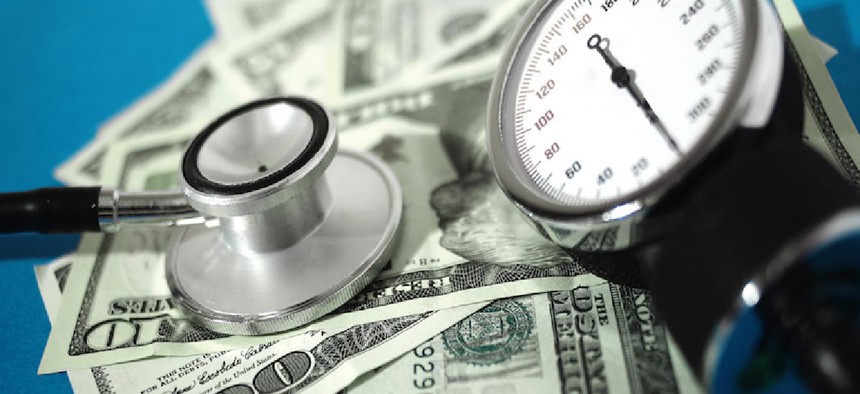Opinion
Health insurance in New York has an Essential problem

mayamaya/Shutterstock
The latest Affordable Care Act enrollment figures for New York reveal a troubling trend: Free and nearly free government-funded programs are crowding out private-sector plans in the state’s health insurance marketplace.
The state’s health care exchange, known as the New York State of Health, reported this month that its overall enrollment for 2016 rose to a new high of 2.8 million, inching the state closer to the worthy goal of universal coverage.
But only 272,000 of those people bought private insurance, the lowest number in the exchange’s three-year history, down 34 percent from 2015.
That’s by far the largest such decline of any state in a year that saw nationwide enrollment in private ACA plans grow by 8.5 percent.
The explanation is simple: This is the year that the Cuomo administration launched the state’s Essential Plan, offering government-sponsored health coverage at little or no cost to people making up to twice the federal poverty level ($23,760 for an individual, $48,600 for a family of four).
Under an optional provision of President Obama’s health reform law – which only New York and Minnesota have chosen to exercise – the federal government pays most of the cost.
Even with minimal publicity, the program attracted 380,000 New Yorkers in its first year – and no wonder. For one thing, people who qualify for the Essential Plan are no longer eligible for tax credits under the Affordable Care Act to offset the cost of private coverage. For them, as a practical matter, it’s the Essential Plan or nothing.
Second, with premiums of either $20 or $0 a month, minimal copayments and no annual deductible, the state is practically giving insurance away. As pointed out in a marketing video evidently aimed at young, urban types, the monthly cost of comprehensive coverage is comparable to the price of a “sweet fedora,” a bejeweled smart-phone case, or a used ukulele.
So the Essential Plan is an undeniable bargain for those who get it, but it has less desirable side effects for the state as a whole.
To begin with, the program is diverting hundreds of thousands of people out of the market for direct-pay private health insurance, which the Affordable Care Act was supposed to be supporting and expanding. Without a healthy, functioning direct-pay market, the law cannot work as intended.
And New York’s market needs all of the paying customers it can get, to spread risk across the largest possible pool and generate stable revenue.
So far, New York State of Health has been struggling to find those customers.
Consider how the New York exchange’s performance compares to that of Florida, a state of similar size. While New York sold 272,000 private Affordable Care Act policies, Florida sold 1.7 million. The New York State of Health exchange is reaching just 22 percent of the target population for private ACA plans, the second-lowest rate in the country, according to an analysis by the Kaiser Family Foundation.
New York also has the second-highest insurance premiums in the country, undoubtedly contributing to the low enrollment numbers. As it happens, the Essential Plan could well make that worse.
The exchange’s enrollment report shows that Essential Plan members skew younger, which usually means healthier: Forty-two percent of its enrollees are older than 45, compared to 51 percent for those buying private coverage through the exchange. Both insurance company executives and independent analysts have predicted that removing this cohort from the private market will push up premiums for those left behind.
The danger is that higher costs will push other younger, healthier people to give up coverage, leaving behind the sicker customers who especially need insurance, setting up a vicious cycle of rising costs and shrinking enrollment. This pattern, known as a “death spiral,” all but killed New York’s direct-pay insurance market before the Affordable Care Act revived it in 2014.
The Essential Plan also marks a significant expansion of New York’s taxpayer-financed health-care system, which is already one of the nation’s most generous and expensive. The rolls of the state’s Medicaid health plan for the poor and disabled stand at 6.1 million, or 31 percent of the population. The Essential Plan layers another two percentage points on top of that, with more likely to come.
The Cuomo administration says the program actually saves money for the state by leveraging federal aid for certain noncitizens whose care is now fully paid for with state dollars. Of course, those federal funds ultimately come out of taxpayers’ pockets, too.
Supporters of the Essential Plan say that private insurance remains prohibitively expensive for poorer families, even with the help of Affordable Care Act tax credits. For many, that is undoubtedly true.
But why not try to close that affordability gap by tackling the factors that keep premiums high, including Albany-imposed insurance taxes and coverage mandates? Why not gear state policy toward bringing New York’s health costs closer to national norms?
At the very least, officials should rethink the design of the Essential Plan – to protect the viability of the private insurance market for those New Yorkers who still need it.
Bill Hammond is the director of health policy at the Empire Center and a former columnist for the Daily News.
NEXT STORY: Podcast: David Dinkins reflects, part 2
